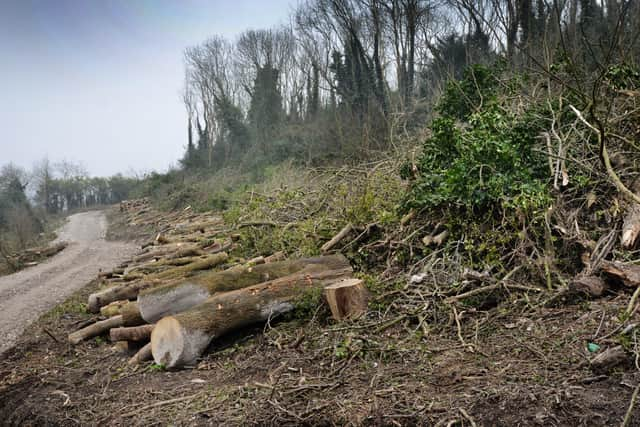VIDEO: Second phase of work to end soon as thousands of trees are felled from Willingdon to Meads
and live on Freeview channel 276
Thousands of trees have already been felled in both areas due to ash dieback, a particularly nasty and rampant airborne fungus which has rapidly spread throughout Eastbourne
The disease has left thousands of trees weakened, with branches or the tree itself at risk of falling onto footpaths, roads and property.
Currently there is no preventative treatment available.


Advertisement
Hide AdAdvertisement
Hide AdThe first phase took place in 2019 and phase two, which has seen contractors working close to Upper Dukes Drive in Meads and behind Longland Road and around Pashley Down Infant School in Old Town, began late last year.
With the nesting season not far away, all work will end soon, restarting in November 2021.
The work is being carried out by Eastbourne council and the Forestry Commission.
A spokesperson at the council said this week, “Felling work started in 2019 and is proceeding as planned. The removal of trees that are dead and dying due to ash dieback is being undertaken over a five-year programme and in close liaison with the Forestry Commission.
Advertisement
Hide AdAdvertisement
Hide Ad“Most encouragingly, there are very positive signs of regrowth and renewal in the areas where our contractors have been working. Additionally, new woodland footpaths have been created and others widened.
“It is estimated that 95 per cent of the ash trees in the UK will die from ash dieback.
The council says that by removing dead timber, new sunlit glades and small meadows are being created to benefit insects and chalk grassland species, old dew ponds will be reawakened as a water source for wildlife, while the natural woodland regeneration, alongside some targeted replanting with mixed species, will avoid a future monoculture and panoramic views from the upper reaches of the downland will be restored.
The diseased timber is being taken to a biomass facility, with the council saying it receives payments from the energy generator to help offset the costs of the overall project.
See a video at www.eastbourneherald.co.uk